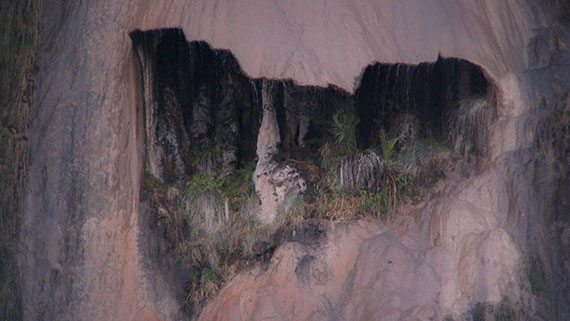
Commissioned by Haus der Kunst, Munich. Courtesy the artist © Monira Al Qadiri
Monira Al Qadiri »
Holy Quarter
Exhibition: 10 Mar – 12 Jun 2022
Guggenheim Bilbao
Abandoibarra Et. 2
48001 Bilbao
+34 94-4359080
info@guggenheim-bilbao.es
www.guggenheim-bilbao.es
Tue-Sun 10-20
The Film & Video exhibitions program is permanently committed to contemporary artistic practices associated with the moving image and explores the fertile relationship between the visual arts, film installations, and contemporary culture in its broadest sense.
Monira Al Qadiri (b. 1983) is a Kuwaiti artist born in Senegal, educated in Japan, and currently living in Berlin. In her work, she uses multiple mediums to explore unknown aspects of colonial history, oil cultures, and the formation of identities in the Middle East. In a region whose geostrategic interest is closely tied to its energy resources, the radical transformation in local ways of life dovetails with the acceleration of industry’s impact on planetary ecosystems. In its sandy landscapes which reach the highest temperatures on the planet, the artist finds potential narratives that simultaneously hurl us to the prehistoric past and to an increasingly less hypothetical future of overwarming and global desertification.
Her recent work, Holy Quarter (2020), takes us on a dreamlike journey through an immense site called Rub al-Khali, located between Saudi Arabia, Oman, the United Arab Emirates, and Yemen. The depth of the sandy images in the film is only comparable to its soundtrack, composed by Fatima Al Qadiri, the artist’s sister and regular collaborator. Using sound as the engine driving the fiction, the point of departure of Holy Quarter is the story of British explorer Harry St. John Philby, who crossed the Arab desert in the 1930s in search of the mythical lost city of Ubar, an “Atlantis of the sands,” which the Quran says was destroyed by divine anger in times immemorial. In its place, what the explorer found was the remains of one of the most important visible meteor impacts on our planet. Even today, mineral fragments of the impact can be found around the Wabar crater, which Philby first took for a volcano. Monira Al Qadiri views these stones as the emissaries of a cosmic, collective spirit.
With its deep, slow voice, the spirit of Wabar accompanies the images with its story and is materialized in the exhibition space as a striking set of sculptures. Made of blown glass, simultaneously delicate yet massively thick, these iridescent pieces evoke both black pearls and huge drops of oil. Speaking in first person in the film, they tell the story of their arrival on our planet and express their dismay at the imminent catastrophes while also encouraging us to work together to reverse them.
Curator: Manuel Cirauqui